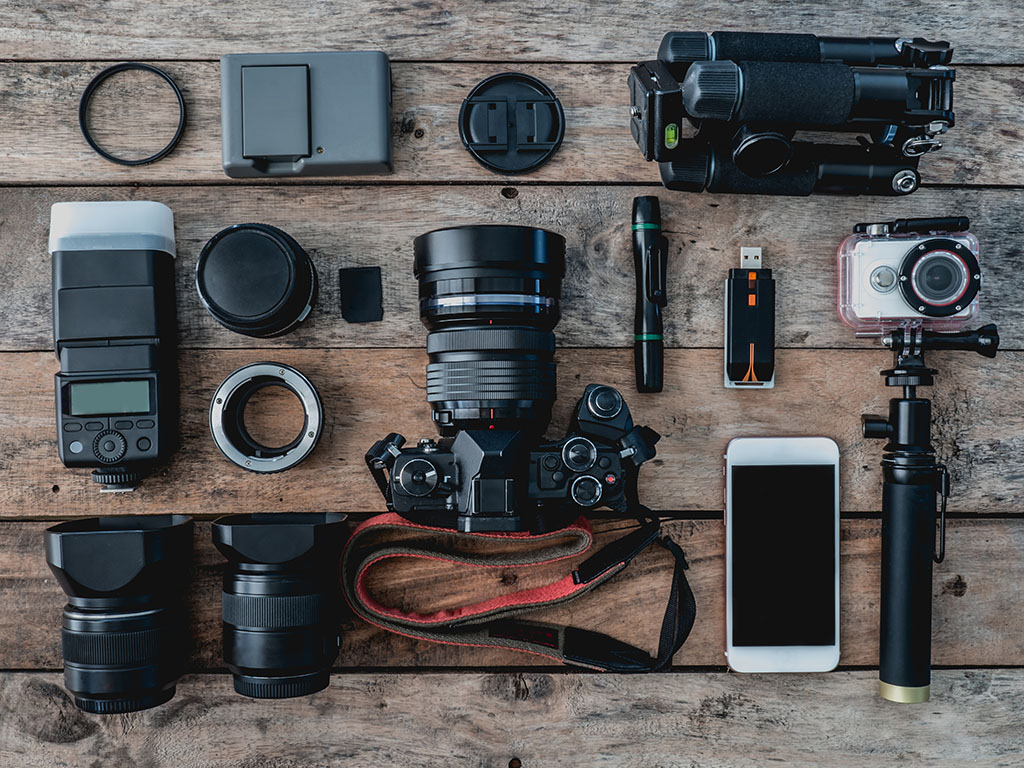How to Grow Your Photography Business

Lots of people dream about being able to earn money from doing the thing they love and starting up your own photography business lets you do just that. You’ll be using your skills to make people happy; whether that’s providing an image for an ad campaign, or capturing someone’s happy, family moment.
It’s been a tough few years for small businesses, with a 6.6% decline in the number of small businesses in the UK in the last two years, but there’s still a lot of competition out there; 810,316 new business were launched in 2021 alone, so with this in mind, we’ve put together a few pointers to help you start and grow your photography business.
Start Small
One of your main priorities as a small business owner is to keep your costs down, and you can do this by running your business from home. All you need is a camera, a laptop or PC with internet access, and a smartphone. This allows you to build your website and develop your portfolio without having to worry about finding the rent for a studio. You might need to practice on friends and family at first while you build your portfolio, and remember to say yes to those small jobs, you never know where they might lead!
Plan
Putting together a strong business plan will set a good foundation for your business. You might want to include the following:
The structure of your business, whether you’ll need a business licence etc.
The services you’ll be offering.
Who your audience is.
How you differ from the competition.
The day-to-day logistics of running your business.
Finances – how much will you need to spend on equipment, how much profit are you expecting to make.

What Kind of Photographer Are You?
Have a clear idea of what kind of photographer you are. Do you photograph events and weddings? Or take family portraits? You might be planning to take stock photographs that you can sell to sites such as Shutterstock, or photos for bloggers, travel, or food companies. How about advertising? Fashion? Sport? Photojournalism? It might be best to stick to one type and specialise in that, so you can perfect your skills and build up a solid client base with the right equipment and a consistent brand. It also partly depends on whether there’s a market for it in your area.
Pricing is a tricky topic; you don’t want to price yourself out of the market, but you also don’t want to undersell yourself, after all, you are doing this to make money. It’s hard to know how to price your work so you could talk to other photographers who might have a better idea of industry prices. It also depends on the kind of photography you’re doing, for example, it might not always be appropriate to charge a day rate.

Invest In The Right Equipment
While no amount of high-spec equipment can make up for a lack of talent, knowing how to use it properly is much more important, so it’s worth investing in a decent camera. This is the tool of your trade, so you might want to look at a DSLR with certain specs that suit your style of photography. For example, if you’re photographing animals or sport, you’ll probably want to look at cameras with a faster shutter speed, or if you’re planning on producing commercial-sized prints you could look at cameras with 35+ megapixels for better resolution.
Do your research into the best lenses, tripods, lighting etc for your particular kind of photography and maybe invest in some courses to learn how to use things like photo editing software, there are plenty of free online courses out there.
You might also want to think about investing in camera insurance to help protect your equipment. The Insurance Emporium offers a 25% Introductory Discount* on their flexible camera insurance policies and you can choose from an Amateur and Semi-Professional policy, or a Professional policy, depending on how much you earn from your business.
Put Yourself Out There
You need to be able to stand out in a busy market, which is why it’s important to develop your own unique style. A good website is key as it lets you showcase your portfolio, and you can also include pricing details and testimonials.
It’s worth spending some time and money on how your website looks; it needs to reflect you and your style of work. Do you want it to be classic or quirky? Stylish and monochrome, or bright and colourful?
You might want a logo, or just have one of your photographs dominate the home page; whatever you choose, your branding needs to be consistent and reflected across your social media channels and business cards etc.
Your business name could just be your own name or could reflect the kind of photography you do; for example, if you do wedding photography you might want a wedding-related name. You could include a blog too to showcase your work.
Make the most of social media, for example, Instagram is a great platform for showcasing your work and interacting with your potential audience. Attend fairs and exhibitions and build up a network with other photographers, they’re the best people to learn from when it comes to working out what marketing methods work.
Conclusion
Starting any new business can be daunting, especially in an industry with a lot of competition, but it can also be rewarding. Building a successful business doesn’t happen overnight, it takes a lot of dedication and hard work, so it’s important to be realistic. There are no shortcuts to a successful business and it’s important to make the most of any opportunities that come your way; you never know, all it takes is for that one picture to be the next big thing.
* The 25% Introductory Discount is available for the first 12 premium payments on lunar and calendar monthly policies or one premium payment on annual policies
All content provided on this blog is for informational purposes only. We make no representations as to the accuracy or completeness of any information on this site or found by following any link on this site. We will not be liable for any errors or omissions in this information nor for the availability of this information. We will not be liable for any loss, injury, or damage arising from the display or use of this information. This policy is subject to change at any time.
We offer a variety of cover levels, so please check the policy cover suits your needs before purchasing. For your protection, please ensure you read the Insurance Product Information Document (IPID) and policy wording, for information on policy exclusions and limitations.




